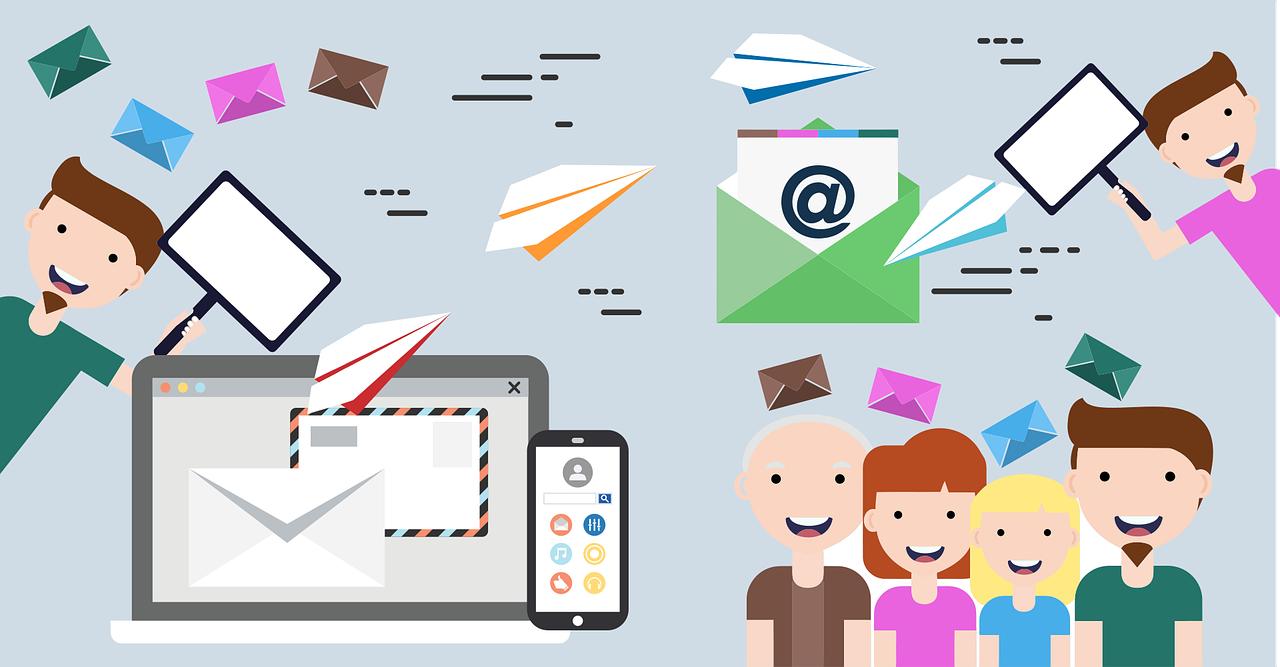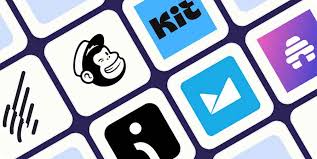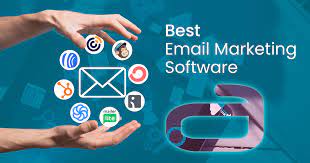
When you don’t own the channels where you reach customers, the ground can always shift beneath you. That’s where email marketing shines.
Automate your email marketing
The good news: there’s an entire ecosystem of free email marketing tools available, and they have all the features you’ll need to build out your email marketing (and then some).
I researched and tested more than 60 email marketing apps with free plans to find the best ones for a variety of use cases and business types. Here are the seven best free email marketing apps.
Top Email Marketing Platforms to Watch 2024
- Mailchimp
- Constant Contact
- MailerLite
- Brevo
- Klaviyo
- GetResponse
- Omnisend
- HubSpot
- Active Campaign
if you’d like details about any of these platforms!
Best free email marketing software for advanced email marketers
Here are some of the best free email marketing software options tailored for advanced email marketers in 2024:
- Mailchimp (Free Plan: 500 contacts, basic automation)
- Sendinblue (Free Plan: 300 emails/day, advanced features like SMS marketing)
- MailerLite (Free Plan: 1,000 subscribers, advanced workflows)
- HubSpot Email Marketing (Free Plan: 2,000 emails/month, advanced CRM integration)
- Moosend (Free Plan: Unlimited emails, automation workflows for up to 1,000 subscribers)
- Benchmark Email (Free Plan: 3,500 emails/month, automation and analytics)
- Zoho Campaigns (Free Plan: 6,000 emails/month, segmentation and A/B testing)
- Mailjet (Free Plan: 6,000 emails/month, customizable templates)
- Omnisend (Free Plan: 500 emails/month, advanced segmentation for e-commerce)
- Elastic Email (Free Plan: Unlimited contacts, pay-as-you-go sending)
These platforms provide advanced features like automation, segmentation, and A/B testing, even in their free plans. Would you like a comparison of these tools?
The best free email marketing platforms at a glance

Here’s a quick overview of the best free email marketing platforms for advanced marketers in 2024:
1. Mailchimp
- Free Plan: Up to 500 contacts, 1,000 monthly emails.
- Best For: Beginners and small businesses with basic automation needs.
2. Sendinblue
- Free Plan: 300 emails/day, unlimited contacts.
- Best For: Those who need email and SMS marketing in one platform.
3. MailerLite
- Free Plan: Up to 1,000 subscribers, 12,000 monthly emails.
- Best For: Advanced automation and clean interface.
4. HubSpot Email Marketing
- Free Plan: Up to 2,000 emails/month.
- Best For: CRM integration and business growth.
5. Moosend
- Free Plan: Unlimited emails for up to 1,000 subscribers.
- Best For: Advanced automation workflows.
6. Benchmark Email
- Free Plan: Up to 3,500 emails/month.
- Best For: Simple automation and analytics.
7. Zoho Campaigns
- Free Plan: Up to 6,000 emails/month for 2,000 subscribers.
- Best For: Segmentation and integrations with other Zoho products.
8. Mailjet
- Free Plan: Up to 6,000 emails/month.
- Best For: Teams needing collaboration tools.
9. Omnisend
- Free Plan: 500 emails/month for up to 250 subscribers.
- Best For: E-commerce businesses with advanced segmentation.
10. Elastic Email
- Free Plan: Unlimited contacts; pay-as-you-go for sending.
- Best For: Cost-efficient email campaigns with scalability.
Would you like a detailed comparison table or recommendations for a specific use case?
What about a free eCommerce email marketing tool?
For eCommerce, a free email marketing tool should offer features like automation, segmentation, abandoned cart emails, and product recommendations. Here are the top free email marketing tools for eCommerce businesses in 2024:
1. Omnisend
- Free Plan: 500 emails/month for up to 250 subscribers.
- Best Features: Pre-built eCommerce workflows (abandoned cart recovery, welcome series), product recommendations, and advanced segmentation.
2. Klaviyo
- Free Plan: 500 emails/month for up to 250 contacts.
- Best Features: Deep integration with eCommerce platforms like Shopify and WooCommerce, abandoned cart emails, and predictive analytics.
3. MailerLite
- Free Plan: Up to 1,000 subscribers, 12,000 emails/month.
- Best Features: Automation workflows, eCommerce integration, and pop-ups for lead generation.
4. Sendinblue
- Free Plan: 300 emails/day with unlimited contacts.
- Best Features: SMS marketing, automation, and transactional emails for eCommerce sites.
5. HubSpot Email Marketing
- Free Plan: 2,000 emails/month.
- Best Features: CRM integration, lead tracking, and email automation for nurturing eCommerce leads.
6. Drip
- Free Trial Only (14 Days), but powerful for eCommerce if upgraded.
- Best Features: Abandoned cart emails, personalized campaigns, and multi-channel automation.
7. Moosend
- Free Plan: Unlimited emails for up to 1,000 subscribers.
- Best Features: eCommerce automation templates and segmentation options.
Would you like help setting up campaigns with one of these tools?
Other free email marketing tools with generous free plans

Here are additional email marketing tools with generous free plans in 2024:
1. Sender
- Free Plan: 2,500 subscribers and 15,000 emails/month.
- Best Features: Automation, segmentation, and detailed analytics.
2. EmailOctopus
- Free Plan: 2,500 subscribers and 10,000 emails/month.
- Best Features: Simple interface, Amazon SES integration, and campaign tracking.
3. Mailjet
- Free Plan: Unlimited contacts and 6,000 emails/month.
- Best Features: Collaboration tools and transactional emails.
4. Benchmark Email
- Free Plan: 500 contacts and 3,500 emails/month.
- Best Features: Drag-and-drop editor, responsive templates, and basic automation.
5. CleverReach
- Free Plan: 250 contacts and 1,000 emails/month.
- Best Features: Reporting tools and automation workflow.
Would you like a feature comparison table or recommendations for specific use cases?
Email marketing services FAQ
Here are some frequently asked questions (FAQs) about email marketing services:
1. What is an email marketing service?
An email marketing service is a tool that allows businesses to create, send, and manage email campaigns to engage with their audience. It often includes features like automation, segmentation, analytics, and templates.
2. Why should I use an email marketing service?
Using an email marketing service ensures:
- Professional email templates.
- Easy automation for workflows (e.g., welcome emails, abandoned cart reminders).
- Tracking and analytics to measure performance.
- Compliance with email regulations like GDPR and CAN-SPAM.
3. Are free email marketing services effective?
Yes, many free email marketing services offer powerful features like automation, templates, and analytics. They are great for small businesses, startups, or anyone testing email campaigns without a large budget.
4. How do I choose the best email marketing service for my business?
Consider these factors:
- Your budget (free or paid plans).
- Features like automation, segmentation, and integrations.
- Scalability as your business grows.
- Ease of use and customer support.
5. What’s the difference between free and paid email marketing services?
- Free Plans: Limited emails, subscribers, or features (e.g., basic templates, fewer automation options).
- Paid Plans: Unlimited sending, advanced features like A/B testing, personalization, and priority support.
6. Can I integrate email marketing with other tools?
Yes, most email marketing platforms integrate with CRM tools, eCommerce platforms (e.g., Shopify, WooCommerce), social media, and analytics tools.
7. What is email automation?
Email automation involves pre-setting workflows that automatically send emails based on triggers (e.g., a customer signing up, making a purchase, or abandoning a cart).
8. How do I grow my email list?
- Offer incentives like discounts or free resources (e.g., eBooks).
- Use pop-ups, landing pages, and social media ads.
- Create engaging content to encourage sign-ups.
9. Are email marketing services compliant with privacy laws?
Most reputable email marketing services comply with laws like GDPR, CAN-SPAM, and CCPA. They provide tools for managing consent, adding unsubscribe links, and ensuring transparency.
10. What’s the role of segmentation in email marketing?
Segmentation involves dividing your audience into groups based on behavior, demographics, or interests. It helps you send targeted messages, improving engagement and conversion rates.
Would you like a detailed explanation of any of these questions or additional FAQs?

